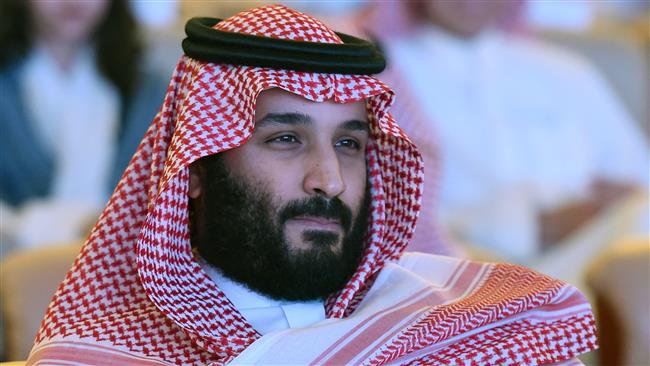
RNA - But then everything changed. King Salman, one of the so-called Sudairi Seven full brothers in the House of Saud still living, seemed ready to bypass norms of seniority and succession in an ultraconservative society that had long valued those very norms.
The Sudairi Seven, or the Sudairi Clan, refers to the sons of King Abdulaziz “Ibn Saud” and his favorite wife, Hussa Sudairi.
On his ascendance to the throne in January 2015, King Salman removed a half-brother, Prince Muqrin, and named his full brother Nayef’s son — Prince Mohammed bin Nayef — as crown prince, effectively restoring the Sudairi Seven lineage.
As a result, hundreds of princes and sons of previous kings lost hope of getting (or keeping) high government posts.
But still more princes were in for a royal rebuff. Some two short years later, the old and reportedly ailing king replaced his nephew with his favorite son — MBS — as the Kingdom’s new crown prince, further consolidating power within an even more exclusive branch of the House of Saud — his very personal own.
And so MBS enjoyed another catapult launch.
It could not have come easily. He had his father to thank for much of this, true, but he must have used cunning. And cunning he had used.
In a report shortly after the June replacement of bin Nayef, The New York Times cited current and former United States officials and associates of the Saudi royal family as saying that the plot to oust the then-crown prince had been “planned out.”
MBS, in other words, had long worked behind the scenes to purge dissidents and pave his way one decisive rung up the succession ladder in what many agreed amounted to a “coup.”
Soon, Mohammed bin Nayef was reported to have been put under house arrest. And reports later came out of a “broad crackdown” and a “string of arrests” to quell criticism of MBS’s other policies, including an economic and diplomatic war on Qatar.
Forcing change
Since his lucky rise from obscurity, MBS has sought to present himself as a change agent, a liberalizing enforcer of values cherished by the country’s young population, not its aging leadership.
He initially toyed with the idea of allowing women to drive and into stadiums (both of which were ultimately implemented in some form). But, while the lifting of the medieval ban on women’s driving was a positive step, it is unclear how and if it would get women anywhere close to the point where they could enjoy equal rights with men in a country that remains staunchly patriarchal.
Effectively in charge of Saudi Arabia’s economy as well, he has devised too many an ambitious plan in that area, too.
In 2016, he unveiled an economic plan, the so-called Vision 2030, to supposedly wean Saudi Arabia off oil. The “Vision 2030,” MBS said at the time, envisaged raising non-oil revenues from 163.5 billion riyals (43.6 billion dollars) in 2015 to 1 trillion riyals (267 billion dollars) by 2030, a step far too long.
All along, he has sought to alleviate the country’s unemployment problem as well.
More recently, and fresh from the fight with bin Nayef, MBS launched specific mega-projects as part of the broader plan to diversify the Saudi economy. He has unveiled a plan to build a 500-billion-dollar independent economic zone straddling Saudi Arabia, Jordan, and Egypt.
All of that in a country where men practically inherit cushy government jobs from their fathers. Saudi Arabia faces a widening budget deficit as well, and growth in its non-oil economy has been near zero. The recent plans, which have nevertheless drawn the world’s business leaders to the Kingdom in pursuit of money, have widely been described as overambitious. According to one recent report, Saudi Arabia may be open for business, “but not everybody’s buying.”
MBS’s longest shot by far has been a plan to revive “moderate Islam” in Saudi Arabia — itself a self-admission that the country has been a hotbed of radicalism. The problem is, ideologically, the country remains well in the clasp of Wahhabi clerics, who, in an unspoken alliance with the government, are free to preach their extremely intolerant ideology as long as they “religiously” approve the government. (Ironically enough, MBS has attempted to track down that Wahhabi radicalism to the 1979 revolution in Iran, where Shia Islam is practiced!) MBS has not gone after those Wahhabi clerics, whose de facto agreement with the royal family remains well in place. Instead, “intellectuals, clerics, journalists,” and even “social media stars” who have been only “mildly critical” of the government have reportedly been targeted in a campaign of arrests since MBS’s “moderate Islam” remarks.
What is it all about?
There is a lot that is missing from MBS’s calculus. Given the country’s social and economic statuses, as well as the reports of the crackdown on dissent, there is reason to wonder whether the prince is genuinely attempting a modernization of the country.
MBS has before him the experiences of former Iranian monarch Reza Shah Pahlavi and the founder of modern Turkey Mustafa Kemal Atatürk, both of whom attempted fast-tracked social and economic modernization. If history is any indication, conservative societies like today’s Saudi Arabia and early-20th-century Iran and Turkey tend to be inhospitable to top-down change at an ultrasonic pace.
And for all the quiet qualities that he has drawn on before and after the June palace coup, MBS has to be strangely credulous to really believe that he can impose fierce modernization from above on Arabian quicksand.
Which begs the question: what do all of his high-drama social and economic plans amount to beyond a crudely-choreographed attempt to consolidate personal power by trying to appeal to a large, young population?
One doesn’t have to wait for too long to know the fate of MBS’s “change” project. The prince is at it at full speed.
H. Javan
847/940